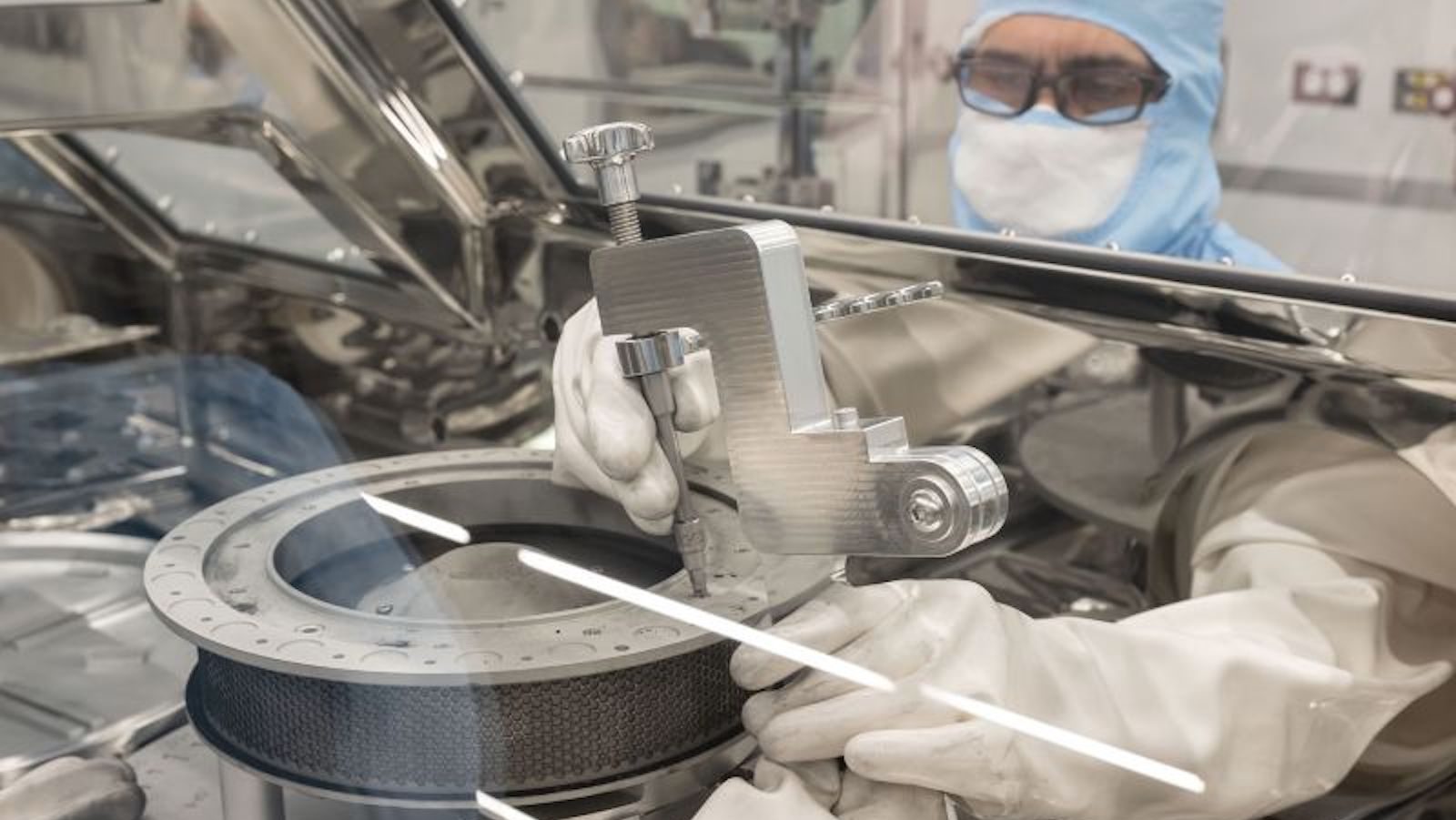(CNN) — After a month-long process, a sample of valuable material has finally been released from an asteroid, NASA announced Thursday.
The space agency has already collected about 70 grams of rocks and dust from the OSIRIS-REx mission, which traveled nearly 6 billion kilometers to collect this unprecedented sample from the near-Earth asteroid called Bennu.
But NASA revealed last October that some of the material remained out of reach in a capsule hidden inside a tool called the Touch-and-Go, a robotic arm with a storage container at one end that collects the sample.
According to NASA, the sampler's head is closed with 35 latches, but opening two of them has proven extremely difficult.
Launching the mechanism is not an easy task. The space agency must use pre-approved materials and tools around the capsule to reduce the risk of damaging or contaminating samples.

The OSIRIS-REx conservation team showed up on January 10 trying to remove a latches that prevented the sample head of the Touch-Operation Sample Acquisition Mechanism, or TAGSAM, from opening fully. The instrument contains additional material from the asteroid Bennu. (Credit: Robert Markowitz/NASA)
These “new instruments also had to operate in the confined space of a glove compartment, which limited their length, weight, and potential movement of the arc,” explains Dr. Nicole Luning, head of OSIRIS-REx conservation at the Space Center. Johnson's statement from NASA in Houston. “The remediation team showed amazing flexibility and did an amazing job removing these stubborn fasteners from the TAGSAM head so we could continue dismantling. We are thrilled with this success.”
To solve the problem, NASA said two instruments were made of surgical steel, the “hardest metal approved for use in original therapeutic glove boxes.”
Before tackling stuck fasteners, a team at Johnson Space Center tested the tools in a “test lab,” slowly increasing the applied torque to ensure the new tools could successfully remove inflexible fasteners.
What the asteroid sample has revealed so far
On Thursday afternoon, NASA reported that the substance trapped in the sample had not yet been detected. “There are still some additional disassembly steps,” the space agency said. After completing these steps, the hidden cache can be photographed, extracted and weighed, NASA said.
Analysis of Bennu's material, collected by NASA researchers last fall, revealed that samples taken from the asteroid contain abundant water in the form of hydrated clay minerals, in addition to carbon.
Scientists believe that the presence of water on asteroids reinforces the current theory about how water reached Earth billions of years ago.
“The reason Earth is a habitable world, and that we have oceans and lakes and rivers and rain, is because these clay minerals landed on Earth between 4 billion and 4.5 billion years ago, making our world habitable,” Osiris said. – REx Principal Investigator Dante Lauretta. “So we're looking at the way the water has been incorporated into the solid.” Loretta is a professor of planetary science and cosmochemistry at the University of Arizona.
Some of Bennu's previously collected samples have been sealed in storage containers for future study over decades, according to NASA's Thursday press release.

“Proud web fanatic. Subtly charming twitter geek. Reader. Internet trailblazer. Music buff.”






More Stories
This is what this study says
The new tool launched by Google to learn English proficiency – Teach Me About Science
China has launched its most complex robotic lunar mission to date, as the space race with the United States intensifies.